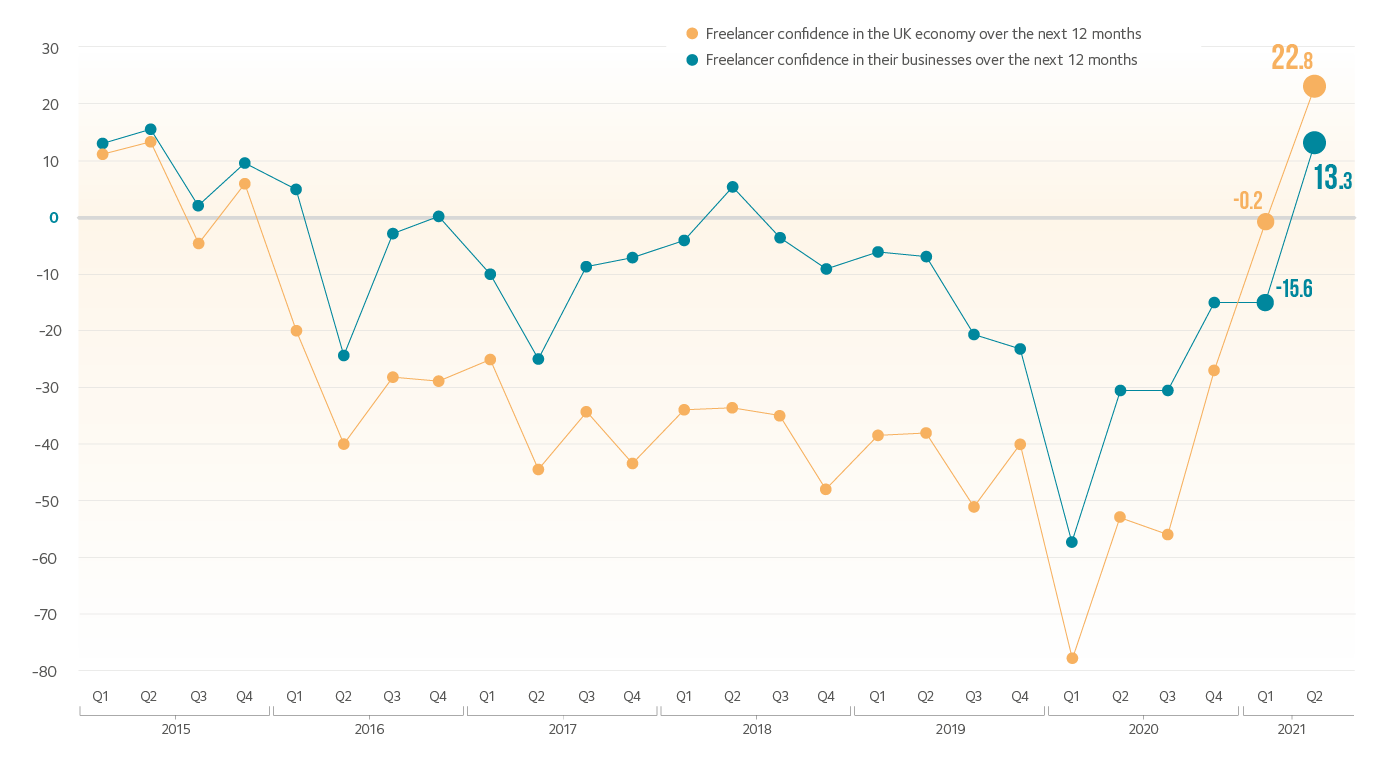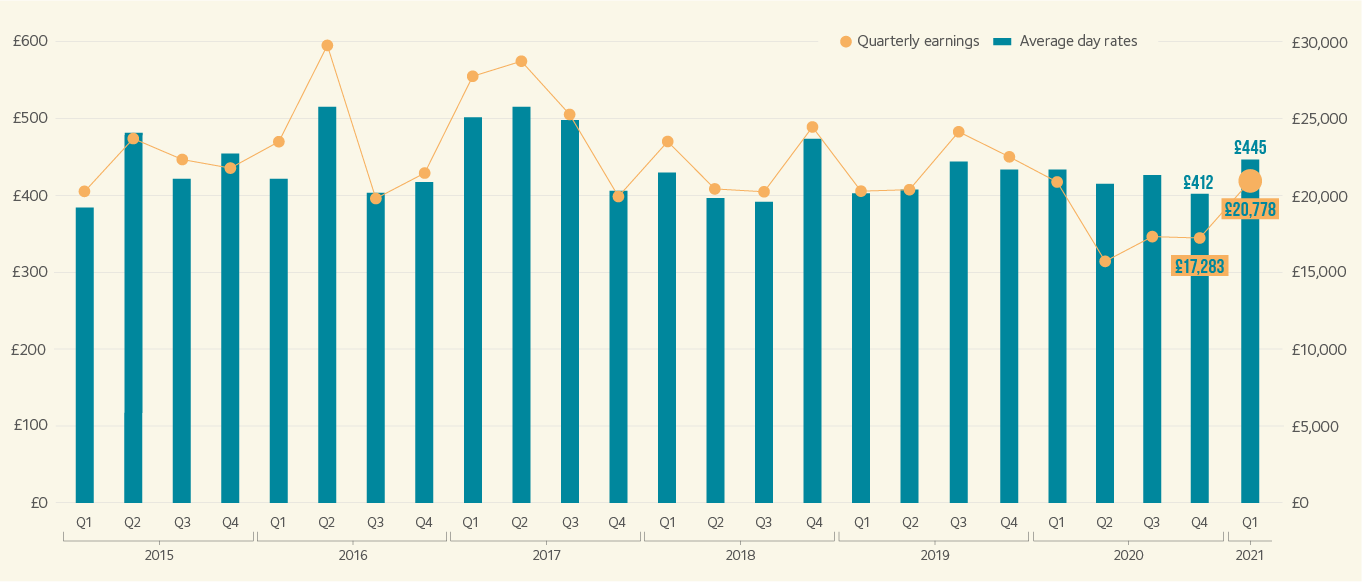- Home
- Knowledge
- Resource library
- Freelancer Confidence Index Q2 2021
Freelancer Confidence Index Q2 2021
- Research
- 23 Sep 2021
- Joshua Toovey
- Freelancers’ 12-month confidence in their businesses has increased to its highest level since 2015.
- Freelancers’ 3-month and 12-month confidence in the economy has reached the highest level since 2014.
- However, average freelancer earnings are lagging behind – and even fell by £2,126 in Q2.
- Many freelancers are slashing their day rates seemingly to compete for fewer contracts after the changes to IR35 self-employed tax regulations.
Freelancers’ confidence in their businesses and the economy is surging, but when it comes to their earnings, reality is not yet meeting expectation. Freelancers’ 3-month and 12-month confidence in the wider economy has now reached the highest level since 2014, when the Confidence Index began. They are now also more confident about their business performance over the next three months than they have been since 2018. And their 12-month business confidence has surged to levels not seen since 2015.

While confidence is surging, however, quarterly earnings are not keeping pace. In fact, after a jump to £20,778 amid the optimism of the first quarter of 2021, average freelancer earnings have now fallen sharply to £18,652.
This £2,126 drop is driven not by a decrease in work (spare capacity – the number of weeks freelancers do not work per quarter – stayed at 3.7 weeks), but by freelancers themselves reducing their day rates. Average freelancer day rates fell from £445 to £397 – lower than during the pandemic and their lowest level since 2018.

The slash in day rates was overwhelmingly driven by SOC1 managerial freelancers (£579 down to £451) and SOC2 professional freelancers (£546 down to £476). This suggests a key factor here may be the government changes to IR35 self-employed tax regulations, which affect these two groups the most. Faced with the changes to IR35, many client organisations are ceasing to engage contractors. Therefore, it may be that freelancers in these groups are slashing their day rates to compete for a diminished pool of contracts.
This is supported by the fact that SOC1 and SOC2 freelancers were also the most likely to say government tax policy relating to freelancers was one of the biggest factors negatively affecting their business (60.0% of SOC1 freelancers cited this, just below the 61.4% who cited the pandemic; among SOC2 freelancers it was by far the biggest factor, picked by 71.8% - followed by government policy relating to hiring freelancers, which was cited by 67.4%).
The fact that 3- and 12-month business confidence remains so high among freelancers despite flagging earnings suggests that even SOC1 and SOC2 freelancers, who are now battling it out over fewer contracts, expect this chaotic situation to right itself and stabilise in the longer term. This may explain why their 12-month business confidence is higher than their 3-month business confidence.
As the economy opens up, though, and the prospect of inflation looms, freelancers are, however, expecting their business costs to increase over the coming year. 68 per cent of freelancers expect their business input costs to increase over the coming year – by an average of 11.1 per cent.
Recent Confidence Index surveys have also begun tracking freelancers’ stress levels and job satisfaction – by asking freelancers to rate both on a scale of 0-10. This now shows that – as may be expected – job satisfaction reached record lows and stress reached record highs in 2020. Now, however, job satisfaction has recovered from a nadir of 5.13 in Q3 2020 to 5.88 in Q1 2021 and 5.85 in Q2. Meanwhile, stress has fallen from a peak of 6.63 in Q1 2020 to 5.77 in Q1 2021 and 5.58 in Q2.
Read the full report here
Meet the author

Joshua Toovey
Senior Research and Policy Officer
